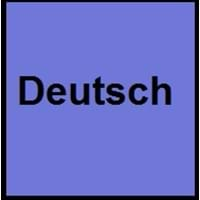Filipino vs German
Countries
Philippines
Austria, Belgium, Germany, Italy, Liechtenstein, Luxembourg, Switzerland
National Language
Philippines
Germany
Second Language
Philippines
North Dakota, United States of America
Speaking Continents
Asia
Europe
Minority Language
Not spoken in any of the countries
Czech Republic, Denmark, Former Soviet Union, France, Hungary, Italy, Namibia, Poland, Romania, Slovakia, Slovenia
Regulated By
Komisyon sa Wikang Filipino
Council for German Orthography
Interesting Facts
- "Filipino" was officially declared as national language by the constitution in 1987.
- "Filipino" is the official name of Tagalog, or synonym of it.
- One of the large group of Indo-Germanic languages is German.
- The second most popular Germanic language spoken today behind English is German language.
Similar To
Tagalog Language
Dutch, Danish, Norwegian, Swedish and English Languages
Derived From
Spanish Language
Albanian Languages
Alphabets in
Filipino-Alphabets.jpg#200
German-Alphabets.jpg#200
Writing Direction
Not Available
Left-To-Right, Horizontal
How Are You?
Kumusta
Wie geht es dir?
Good Night
magandang gabi
gute Nacht
Good Evening
Magandang gabi
guten Abend
Good Afternoon
Magandang hapon
guten Tag
Good Morning
Magandang umaga
guten Morgen
Sorry
pinagsisisihan
Verzeihung
I Love You
Mahal kita
Ich liebe dich
Excuse Me
patawarin ninyo ako
Entschuldigung
Dialect 1
Bikol
Swiss German
Where They Speak
Philippines
Switzerland
How Many People Speak
Not Available
Dialect 2
Hiligaynon
Swabian German
Where They Speak
Philippines
Germany
Dialect 3
Waray
Texas German
Where They Speak
Philippines
Texas
Speaking Population
Not Available
Native Name
filipino
Deutsch
Alternative Names
Pilipino
Deutsch, Tedesco
French Name
filipino; pilipino
allemand
German Name
Pilipino
Deutsch
Pronunciation
[ˌfɪl.ɪˈpiː.no]
[ˈdɔʏtʃ]
Ethnicity
Not Available
Germans
Origin
16th Century
6th Century AD
Language Family
Austronesian Family
Indo-European Family
Subgroup
Not Available
Germanic
Branch
Not Available
Western
Early Forms
No early forms
No early forms
Standard Forms
Filipino
German Standard German, Swiss Standard German and Austrian Standard German
Language Position
Not Available
Signed Forms
Not Available
Signed German
Scope
Individual
Individual
ISO 639 1
No Data Available
de
ISO 639 6
Not Available
deus
Glottocode
fili1244
high1287, uppe1397
Linguasphere
No Data Available
52-ACB–dl & -dm
Language Type
Living
Living
Language Linguistic Typology
Not Available
Subject-Object-Verb, Subject-Verb-Object
Language Morphological Typology
Not Available
Fusional, Synthetic
Filipino and German Language History
Comparison of Filipino vs German language history gives us differences between origin of Filipino and German language. History of Filipino language states that this language originated in 16th Century whereas history of German language states that this language originated in 6th Century AD. Family of the language also forms a part of history of that language. More on language families of these languages can be found out on Filipino and German Language History.
Filipino and German Greetings
People around the world use different languages to interact with each other. Even if we cannot communicate fluently in any language, it will always be beneficial to know about some of the common greetings or phrases from that language. This is where Filipino and German greetings helps you to understand basic phrases in Filipino and German language. Filipino word for "Hello" is Kumusta or German word for "Thank You" is Danke. Find more of such common Filipino Greetings and German Greetings. These greetings will help you to be more confident when conversing with natives that speak these languages.
Filipino vs German Difficulty
The Filipino vs German difficulty level basically depends on the number of Filipino Alphabets and German Alphabets. Also the number of vowels and consonants in the language plays an important role in deciding the difficulty level of that language. The important points to be considered when we compare Filipino and German are the origin, speaking countries, language family, different greetings, speaking population of these languages. Want to know in Filipino and German, which language is harder to learn? Time required to learn Filipino is 44 weeks while to learn German time required is 30 weeks.





